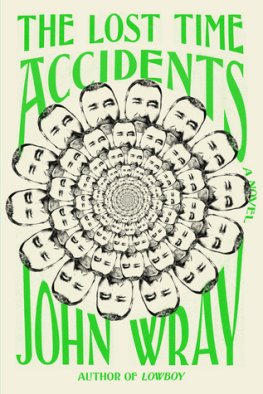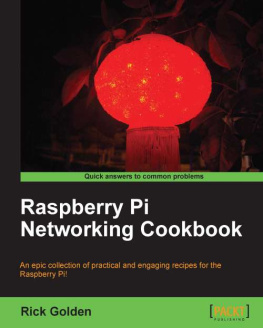
John Twelve Hawks
The Golden City
Seven years ago, I had a vision that evolved into The Traveler, the first book of the Fourth Realm Trilogy.
Looking back, I realize that a lifetime of thoughts and experiences were expressed within this fiction. Both the story and its characters couldnt be held within one country or even a particular reality.
The Golden City is the final book of the trilogy, and it feels as if Im leaving a familiar place. Im sad to be moving on, but feel that I have explored every part of the landscape.
Some people have enjoyed reading the books for entertainment, but others have been inspired to start websites and groups that are beginning to resist the various manifestations of the Vast Machine. I will continue to support these efforts in any way possible.
This third novel is dedicated to my readers. Its been a privilege to communicate with you. I hope that you and those you love are surrounded by Light.
John Twelve Hawks
Although it was clear that no other car was traveling down Sycamore Lane, Susan Howard switched on her turn signal and glanced in the rearview mirror before pulling into the driveway. Susan lived in a two-bedroom cottage with rose bushes bordering the front walkway. There was birch tree in the back and a detached garage that resembled a cow shed covered with ivy.
The garage was filled with storage boxes and old furniture from her mothers house. Whenever Susan arrived home she felt a brief moment of guilt. I really should clear everything out, she thought. Sell Mommys couch and the dining room chairs or just give them away. Because of the furniture, she had to keep her car in the driveway. Whenever it snowed, she spent twenty minutes warming up the car and chipping the ice off the windshield.
But now it was Spring, and the only thing she noticed when she got out of her car was the sound of cicadas and the smell of wet grass. Susan gazed up at the night sky, looking for the Big Dipper. Usually it pleased her that she lived far enough from New York City to see the constellations, but tonight her eyes focused on the dark, cold spaces between the stars. They were watching her. She could feel it. Someone was watching her.
Stop it, she said out loud. And the calm tone of her own voice made her feel better.
Susan pulled a handful of bills and catalogues out of the mailbox, then unlocked the front door. She heard a familiar yip-yip! and a Cocker Spaniel raced out of the kitchen, his nails clicking on the linoleum. It was wonderful to be greeted by a friend when you came home and Charlie really was her little friend. But the dog was mischievous, too-especially if Susan was late. She walked through the cottage and made sure that there hadnt been an accident before she gave Charlie a treat and let him out into the back yard.
Up until a few months ago, she had followed the same routine: she would let the dog out, pour herself a glass of Chablis, and then turn on her computer to answer her email. But she rarely used that computer anymore, and drinking alcohol made her feel sloppy and unaware. They were watching her. She was sure they were watching her. And now she had broken the rules and done something very dangerous.
***
Susan was a computer programmer working for the Evergreen Foundation Research Center in Westchester County. She was involved in creating the software interface for the new quantum computer and had been part of the small group in the observation gallery when Michael Corrigan had left his body for another world. The Crossover Project was top secret, but Susans team had been told that their work involved national security and the war on terror.
Maybe that was true, but it was still strange to spend part of your work day staring down at a man lying on a table with wires attached to his brain. For several hours, it had been difficult to detect Mr. Corrigans pulse. Then suddenly he opened his eyes, got off the table, and shuffled out of the room.
A few weeks later every Foundation employee was called into the administration building and told about a new program called Norm-All. The slogan for the program was: A good friend cares about you. The cheerful young woman from Human Resources explained that Norm-All would automatically monitor their physical and mental health. There was a permission form (which everyone signed), and then her research team went back to work.
Susan was the only one who took the programs informational brochure. She studied it during lunch. Norm-All was something called a personal parameter program. Thousands of people working for the U.S. Defense Department had been monitored for five years, and this had established the benchmarks for acceptable behavior. Each person was given a number-a sort of equation-that gradually changed as the computer gained more data about their particular lifestyle. If the number went beyond a certain parameter of normalcy, then the employee was more likely to have mental and physical problems.
A few days later infrared cameras appeared in all the buildings. The cameras automatically scanned everyones body and recorded blood pressure, heart rate and body temperature. There were rumors that phone calls at the Foundation Research Center were evaluated by a computer program that measured the stress level in your voice and the use of various trigger words.
Most of the monitoring was unobtrusive. Norm-All could track the movement of your car and evaluate the purchases you made with your bank card. Susan wondered how much weight was given to certain negative actions; your personal equation would certainly be damaged by an arrest for drunken driving, but how much did the number change when you checked out a negative book from the public library?
There were rumors that two people were fired because of unacceptable Norm-All equations, and several part-timers were not given full-time jobs. Within a month, her research team stopped talking about anything controversial. The three acceptable topics of conversation were shopping, sports and TV shows. One Friday they all went to a bar to celebrate a colleagues birthday; when they ordered a third round of drinks, a programmer joked, Well, this is going to screw up our Norm-All equations!
Everyone laughed, but there was no discussion. They just resumed their conversation about the new models of hybrid cars, and that was it.
Susan had spent her life working with computers and knew how easy it was to trace IP numbers on the Internet. In March, she stopped using her home computer, bought a used laptop at a swap meet, and began to access the wireless connection at a local caf. Susan felt like an alcoholic or a drug addict-someone with a shameful problem she couldnt control. When she left work and drove to the caf, she felt as if she were entering a bad part of town with broken street lights and abandoned buildings. In obscure chat rooms, people who called themselves Free Runners made allegations about the Evergreen Foundation. Apparently the Foundation was the public face of a secret organization called the Tabula that wanted to destroy freedom. This plan was opposed by an alliance that called itself the Resistance.
At first, Susan did nothing but read the various discussion threads. But three days ago, she had taken the first step and began to chat with a few Free Runners based in Poland.
I work for the Evergreen Foundation, she typed. We are about to start testing a new version of a quantum computer.
Where are you? a person asked.
Are you in danger? asked another. Can we help you?
Next page







